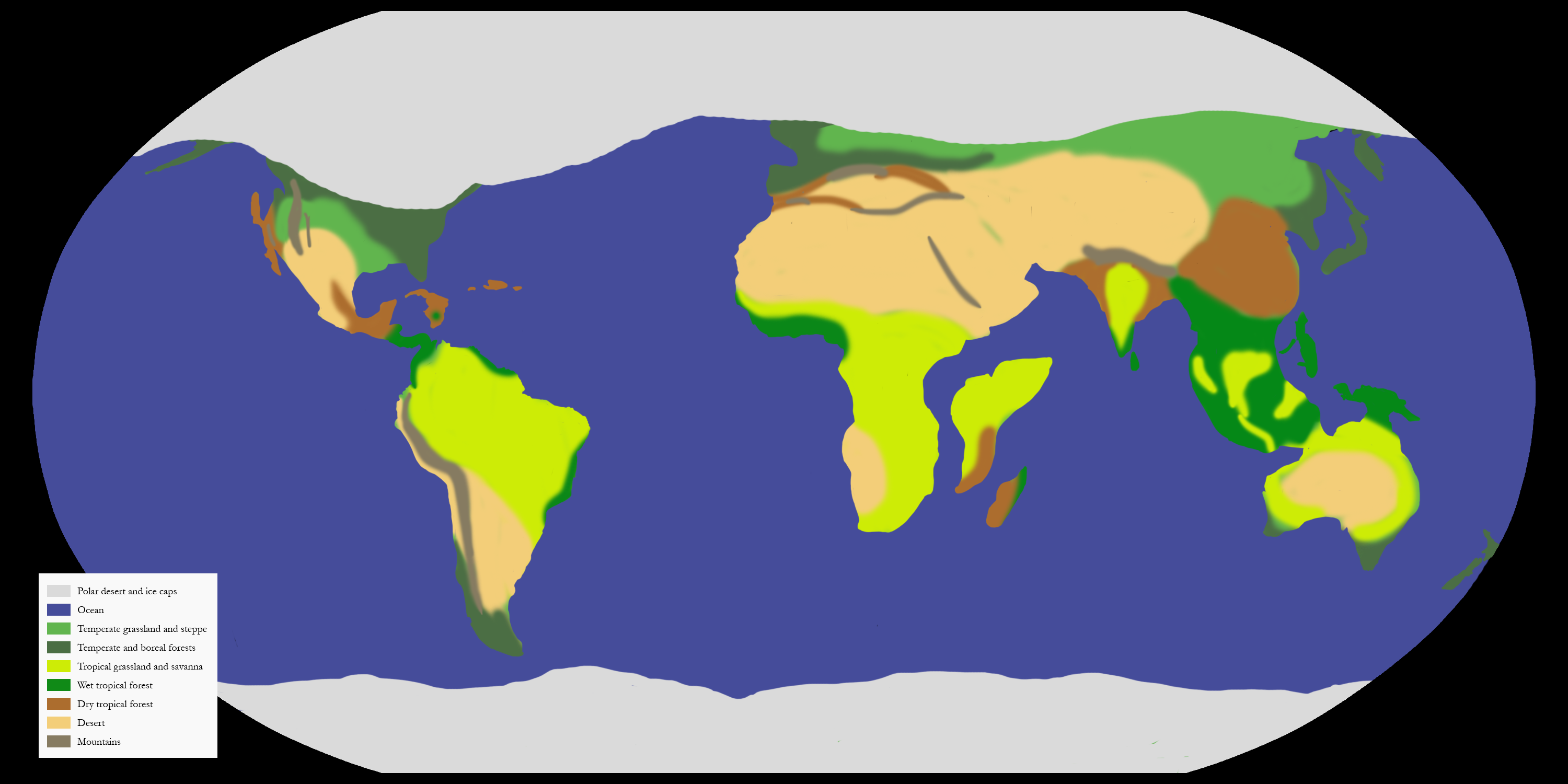
The Cenozoic
0-52 million years hence
The impact of man will not stop the Cenozoic era. After the disappearance of humanity, the earth will recover and erase virtually all traces of their existence. The Cenozoic glaciation continues on as carbon dioxide gets drawn down from the atmosphere, although it takes a while to return to its former strength. The Holocene mass extinction has left a large impact, but not enough to overturn the balance of power - mammals remain dominant throughout the Cenozoic, and surviving species radiate to replace their fallen relatives.
The glaciation will continue for at least 20 million years ahead. After this point, Antarctica begins to move away from the south pole. As this happens, the Antarctic ice cap gradually melts, and the planet warms again. The Cenozoic ends 52 million years hence, with the eruption of a flood basalt in western Africa and a consequent mass extinction event.
Geography and climate
 35 million years hence; early Telogene
35 million years hence; early Telogene
The earth 35 million years in the future is one that we would still recognize. Most of the continents have moved little in the intervening time. The Caribbean Plate has moved east, removing a chunk of Central America, but the gap was soon filled by the northward movement of South America. Africa has also moved north, closing off the Mediterranean Sea. The Somali Plate has moved eastward, creating the continent of East Africa. Australia has moved slightly northward of its modern position too, and low sea levels afford a land bridge connecting it to Afro-Eurasia.
Over the past 35 million years, natural forces have countered anthropogenic global warming. The same factors that led to the formation of the first Cenozoic ice age have led to the genesis of the second; Antarctica still remains at the South Pole, and the genesis of the Mediterranean Mountains provides surfaces for carbon to weather into the earth. Large polar ice caps have formed once again; this map displays their maximum extent in the latter half of the Cenozoic. Tropical forests are not as widespread as they once were, being replaced by tropical grasslands.
Explore the Cenozoic
| Holocene Extinction | |||||
 1 million years 1 million yearsSouth Dakota |  10 million years 10 million yearsAustralia |  12 million years 12 million yearsHawaii |  35 million years 35 million yearsFrance |  40 million years 40 million yearsEthiopia |  50 million years 50 million yearsPeru |
| Telogene-Tularean Extinction |